Research Article - (2023) Volume 11, Issue 2
Efficacy and Safety of Remimazolam Tosilate for General Anesthesia Induction and Maintenance in Elderly Patients: A Randomized, Controlled Study
Fei Yang1,
Lideng Guo2,3,
Xiawei Lai1,2,
Zhijing Zhang2,
Di Wang2,3,
Shanpan Peng2 and
Haihui Xie1,2*
1Department of Clinical Medicine, Southern Medical University, Guangzhou, China
2Department of Anesthesiology, Southern Medical University, Dongguan, China
3Department of Anesthesiology, Guangdong Medical University, Zhanjiang, China
*Correspondence:
Haihui Xie, Department of Anesthesiology, Southern Medical University, Dongguan,
China,
Email:
Received: 20-Dec-2022, Manuscript No. IPAAD-22-15305;
Editor assigned: 23-Dec-2022, Pre QC No. IPAAD-22-15305 (PQ);
Reviewed: 06-Jan-2023, QC No. IPAAD-22-15305;
Revised: 22-Mar-2023, Manuscript No. IPAAD-22-15305 (R);
Published:
30-Mar-2023, DOI: 10.36648/2321-547X.23.11.13
Abstract
Purpose: To evaluate the efficacy and safety of Remimazolam Tosilate (RT) for general anesthesia in
elderly patients.
Methods: 66 patients aged 60 years to 80 years who were scheduled to undergo surgery were
randomized into three groups: Group A (RT 6 mg/kg/h), group B (RT 12 mg/kg/h), or group C
(propofol 2.0 mg/kg-2.5 mg/kg). Primary efficacy indicators (success rate of anesthesia sedation),
secondary efficacy indicators (BIS value, anesthesia induction time, anesthesia awakening time),
safety efficacy indicators (incidence of anesthetic hypotension; incidence of anesthetic hypoxemia,
etc.) and Adverse Events (AEs) were routinely monitored.
Results: The success rate of anesthesia sedation was 95.45% in the 6 mg/kg/h RT group, and 100% in
the 12 mg/kg/h RT and propofol groups. RT was noninferior to propofpl group (difference in rate
-4.55%, 95% confidence interval (CI, -0.12; 0.03), meeting criteria for noninferiority). There were no
significant differences in the time of anesthesia induction or incidence of bradycardia and
hypotension among the three groups. However, compared with the propofol group, the awakening
time in the RT groups was significantly shorter (P<0.05), less impact on heart rate, no injection pain,
and significantly less norepinephrine usage (P<0.05). The intraoperative BIS values of the three groups
were all maintained at 40-72, and no intraoperative awareness was found.
Conclusion: RT (6 mg kg/h and 12 mg kg/h) was well tolerated and noninferior to propofol with regard
to efficacy in inducing general anesthesia in elderly patients. And there were no significant difference
in the induction and maintenance of anesthesia between different doses of RT.
Keywords
Remimazolam tosilate; Propofol; General anesthesia; Elderly patients; Bradycardia
Introduction
With the transformation of disease patterns and the aging
population, the demand for surgical operations has greatly
increased. The proportion of surgeries performed in elderly
patients has also increased yearly. Because elderly patients
have reduced cardiovascular regulation and reduced stress
capacity for external injury, often in combination with
cardiovascular and cerebrovascular system diseases, they are
prone to severe hemodynamic fluctuations and even
cardiovascular and cerebrovascular events during the
induction of anesthesia and intubation. Such age-related
physiological and pharmacokinetic changes, as well as the
presence of comorbidities and polypharmacy, complicate drug
therapy in elderly individuals, thereby greatly increasing the
risk of anesthesia. Therefore, rational selection and
appropriate application of anesthesia-inducing drugs are
crucial for elderly patients who require general anesthesia for
surgery.
Commonly used drugs for the induction of intravenous
anesthesia in clinical practice are propofol, which has a rapid
onset of action and a short duration of action. It is often
associated with injection site pain, especially severe
cardiovascular and respiratory depression, and may even lead
to cardiac arrest; its use is limited to a certain extent for
elderly patients. Therefore, preventing or reducing the
occurrence of sedation-related complications is the best
approach. The most important finding was that, although
both RT and propofol caused transient cardiovascular and
respiratory depression, the incidences of hypotension,
treatment related hypotension, and respiratory depression
were lower in the RT group than in the propofol group and
could be rapidly reversed by flumazenil.
RT (HR7056) is the toluene sulfonate of remimazolam, a new
type of water soluble ultrashort-acting benzodiazepine that
mainly acts on aminobutyric acid A (GABAA) receptors,
inhibits neuronal action, decreases neuronal excitability, and
causes decreased body activity, sedation, and amnesia.
Previous studies have shown equivalent anesthetic effects for
remimazolam and propofol in patients undergoing
colonoscopy and in elderly patients undergoing hip
replacement, with the former being significantly safer. In
addition, phase II/III clinical trials in Japan have shown that
remimazolam not only induces and maintains sedation during
general anesthesia but is also noninferior to propofol in terms
of efficacy. Studies have shown the efficacy and safety of
remimazolam for inducing general anesthesia in ASA class III
elderly patients. Even though age and ASA class have little
effect on remimazolam anesthesia extubation time, for some
frail elderly patients, it was suggested to use a lower dose of
remimazolam. Nevertheless, the efficacy and safety of RT for
general anesthesia induction in elderly patients remain
unclear. With the characteristics of rapid onset of action,
short maintenance and recovery time, no accumulation,
metabolism not dependent on liver and kidney function and
no serious side effects, RT may become an ideal drug for the
induction and maintenance of anesthesia in elderly patients.
Thus, we performed a single center, randomized, control trial
to compare the efficacy and safety of RT versus propofol for
general anesthesia induction in elderly patients to provide
clinical experience and a theoretical basis for RT for general
anesthesia induction in elderly patients [1].
Materials and Methods
Participants
Elderly patients aged 60 years-80 years, who required general
anesthesia with tracheal intubation for elective surgery at
affiliated Dongguan hospital, Southern medical university
(Dongguan people's hospital) were enrolled in this study.
Exclusion criteria included hypersensitivity to or dependence
on anesthetic components that may be used in the study,
combined craniocerebral injury and intracranial hypertension,
history of allergies, history of psychiatric disorders,
bradycardia (heart rate<50 beats/min), foreseeable difficult
intubation, or other conditions judged to be unsuitable for
participation in the clinical trial.
The criteria for exiting the trial were as follows: the subject
developed a condition that met the exclusion criteria during
the study or a clinical adverse event that jeopardized the
safety of the subject, an abnormal laboratory test, or other
medical condition that resulted in the possibility that the
benefit to the subject from continued medication was less
than the risk; investigators considered other anesthetic
factors that prevented the subject from continuing the trial
[2].
Randomization and Blinding
Numbering was based on the time of surgery. Random
numbers were generated by SPSS 25.0 software, and the 66
patients were randomly divided into groups A (RT 6 mg/kg/h),
B (RT 12 mg/kg/h), or C (propofol induction period loading
dose of 2.0 mg/kg-2.5 mg/kg), with equal sample sizes. We
applied a single-blind design because the administration
dosage and dosage form of RT and propofol are different. The
anesthesiologist who performed the sedation was aware of
the treatment assignment of each participant. Throughout
the trial, neither the outcome assessors nor participants were
aware of the treatment assignment.
Study Protocol
This was a randomized controlled-group study comparing the
efficacy and safety of different doses of RT relative to
propofol. Sixty-six elderly patients requiring general
anesthesia with tracheal intubation for elective surgery were
recruited and included in the study based on inclusion and
exclusion criteria, and the trial participants were randomized
into three groups: RT 6 mg/kg/h (group A), RT 12 mg/kg/h
(group B), and propofol (group C), with a sample size ratio of
1:1:1 in each group. We used RT with a specification of 36
mg/vial as the research drug, and 36 ml of 0.9% compound
sodium chloride injection was added to each vial, resulting in 36 ml of 1 mg/ml injection, which was used to draw the
required dose with a syringe [3].
The night before surgery, the anesthesiologist will perform a
preanesthesia assessment, with the consent of the patient
and his or her family, and the patient will sign the informed
consent form. All patients fasted before surgery, and assured
anesthesiologists that unnecessary premedication, such as
benzodiazepines and alcohol, was not taken. After admission
to the operating room, the Electro Cardiogram (ECG), Heart
Rate (HR), Oxygen Saturation (SpO2), and BIS were routinely
monitored. Peripheral venous access was opened and an
intravenous drip of 500 ml of 0.9% compound sodium
chloride was administered. A noninvasive arterial puncture
was performed, and the Mean Arterial Pressure (MAP) was
monitored. All patients inhaled oxygen (oxygen flow rate 5 l/
min) through an inflatable disposable anesthetic face mask for
3 min before induction.
After recording the baseline vital signs, 6 mg/kg/h or 12
mg/kg/h of intravenous RT infusion, or (2.0 mg/kg-2.5 mg/kg)
of propofol (Beijing Fresenius Kabi pharmaceutical co., ltd.,
China) intravenous injection was started, and this time was
defined as the start of anesthesia induction. When the BIS ≤ 60, the intravenous infusion of cisatracurium besilate at 0.2
mg/kg-0.3 mg/kg and sufentanil at 0.4 μg/kg-0.6 μg/kg was
started. The time from the start of the RT or propofol infusion
to Loss of Consciousness (LoC) was recorded. We de ined LoC
as the time when the patient became unresponsive to the
shaking of their shoulders (MOAA/S ≤ 1). A ter con irming LoC,
the anesthesia maintenance starting dose of RT was adjusted
to 0.5 mg/kg/h, and then adjust the RT infusion rate according
to the BIS value to not exceed 0.2 mg/kg/h each time. In the
propofol group, the anesthesia maintenance dose was 3 mg/
kg/h-8 mg/kg/h. Intraoperative analgesia and muscle
relaxation were maintained by intravenous pumping of
remifentanil at 0.25 ug/kg/min-0.5 ug/kg/min and
cisatracurium besilate at 0.06 mg/kg/h-0.12 mg/kg/h.
Sufentanil 5 μg and tropisetron 2 mg-5 mg were slowly
injected intravenously at 30 min to 1 h before the end of the
operation. The time from the withdrawal of RT/ propofol to
the extubation of the patient was recorded as the recovery
time from anesthesia (Table 1).
| Responds readily to name spoken in normal tone |
5 (Alert) |
| Lethargic response to name spoken in normal tone |
4 |
| Responds only after name is called loudly and/or repeatedly |
3 |
| Responds only after mild prodding or shaking |
2 |
| Responds only after painful trapezius squeeze |
1 |
| Does not respond to painful trapezius squeeze |
0 |
Table 1: The Modified Observer’s Assessment of Alertness and Sedation (MOAA/S) scale.
The intraoperative BIS was maintained at 40-60 to ensure the
depth of anesthesia. During the operation, the infusion rate of
RT (0.05 mg/kg/h-2 mg/kg/h) or propofol (4 mg/kg/h-10
mg/kg/h) was adjusted according to the BIS value. If the BIS
still rises to>60 with the maximum infusion volume of RT, RT
0.05 mg/kg can be intravenously injected each time until the
BIS value is lower than 60, and the interval between the two
doses cannot be less than 1 minute. If during the induction
and maintenance of the process, the required depth of
anesthesia was not achieved after more than 3 supplemental
doses, it was determined to have failed on sedation, and RT,
the anesthesia drug, was changed to propofol, and recorded
in the analysis.
Differences in the primary efficacy index, secondary efficacy
index and safety evaluation index between the three groups
were compared and analyzed according to the intention-totreat
principle, and the occurrence of AEs during the trial
period was recorded [4].
Measurements
Treatment plan for AEs during anesthesia. (i) Hypertension (an
increase in MAP exceeding 20% of the baseline value),
intravenous injection of urapidil (Xi'an Lijun pharmaceutical co., ltd., China) 5 mg/time, depending on the blood pressure.
(ii) Hypotension (a decrease in MAP exceeding 20% of the
baseline value), intravenous infusion of norepinephrine
(Grand pharmaceuticals co., ltd., Wuhan province, China) 0.03
μg/kg/min-0.2 μg/kg/min, depending on the blood pressure.
(iii) Bradycardia (HR<50 beats/min), intravenous injection of
atropine 0.2 mg/time-0.3 mg/time. (iv) Tachycardia (HR>120
beats/min), the investigators implemented treatment
according to clinical experience, with intravenous injection of
esmolol 20 mg/time if necessary. (v) For hypoxemia
(SpO2<90%) after anesthesia and resuscitation, the patient’s
head and chin was raised, and the face mask was pressurized
to assist with breathing if necessary [5].
The primary efficacy endpoint was the success rate of
sedation (the percentage of patients successfully completing
the procedure), as defined as follows: (i) Completion of the
entire surgical procedure; (ii) No need for replacement and/or
rescue sedation. Secondary efficacy endpoints included the
following: (i) Change in BIS value over time (time from
induction of anesthesia until BIS value ≤ 60, value before
tracheal intubation, intraoperative maintenance of BIS value);
(ii) Time to induction of anesthesia; (iii) Time to awaken from anesthesia, as defined as the time from discontinuation of
study drug to extubation (MOAA/S score ≥ 4).
Safety assessment indicators: (i) Incidence of hypotension; (ii)
Incidence of hypertension; (iii) Incidence of hypoxemia; (iv)
Intraoperative awareness (after general anesthesia, the
patient can recall what happened during the operation); (vi)
Incidence of bradycardia.
Sample Size and Statistics
This study had a non-inferiority design, and the primary
efficacy endpoint was the success rate of general anesthesia
sedation in elderly patients. We did not calculate the sample
size for incorporating patients because we could not estimate
the effect size of RT due to the lack of previous data and our
own limited experience with the drug. We decided to enroll
66 patients for this study to investigate the efficacy and safety
of RT.
Statistical analysis was performed using spss Statistics,
version. shapiro wilk and levene tests were used to assess the
data distribution and homogeneity of variance, respectively.
Quantitative data are presented as the means ± Standard
Deviations (SDs) or medians and interquartile ranges, as
appropriate. Numbers (percentage) were used to describe
categorical data (such as gender and MOAA/s scores).
Continuous variables were analyzed using one-way Analysis
Of Variance (ANOVA) or Welch ANOVA based on the
homogeneity of variance test and kruskal wallis test and then
followed by Bonferroni's post hoc test or Games Howell's post
hoc test to compare differences among groups. Categorical variables were compared using Pearson's chi-square test or
Fisher's exact test, followed by Bonferroni's post hoc test. A p
value< 0.05 was considered to indicate statistical significance
[6].
Results
Patient Characteristics
A total of 66 eligible patients were enrolled in this study and
randomized into three groups (22 in each group). One patient
in group A after 3 remedial doses was failed sedation due to
persistent intraoperative hypertension, and 1 patient in group
C was excluded, primarily because of EEG monitoring
malfunction. There were no significant differences in
demographic characteristics among the three groups. At
baseline examination, the demographic and baseline
characteristics of the patients in the three groups were well
balanced in terms of age, BMI, MAP, SpO2, and other
demographic characteristics. Most patients had
comorbidities, including hypertension and diabetes. Group A
consisted of 11 males and 11 females, with a mean age of
69.23 (± 5.40) years. Group B consisted of 10 males and 12
females, with a mean age of 67.05 (± 4.55) years. Group C
included 7 males and 15 females, with a mean age of 68.73 (±
5.68) years. The overall mean age was 68 years, and male
patients accounted for 42.42% (Table 2 and Figure 1) [7].
| Characteristic |
6 mg/kg/h RT |
12 mg/kg/h RT |
Propofol |
Total |
P-value |
|
Age, y
|
| Mean ± SD |
69.2 ± 5.40 |
67.05 ±4.55 |
68.73 ± 5.68 |
68.73 ± 5.68 |
0.176 |
| Median |
68 |
67 |
68.4 |
68.4 |
| (IQR) |
(65.00,73.25) |
(62.75,71.25) |
(63.00,74.25) |
(63.75,72.25)sss |
|
Sex, No. (%)
|
|
| Male |
11 (50.00) |
10 (45.45) |
7 (31.82) |
28 (42.42) |
0.545 |
| Female |
11 (50.00) |
12 (54.55) |
15 (68.18) |
38 (57.58) |
|
BMI, kg/m2
|
| Mean ± SD |
24.23 ± 4.42 |
21.74 ± 2.43 |
23.59 ± 3.81 |
23.59 ± 3.81 |
0.071 |
| Median |
24.12 |
22.09 |
23.62 |
23.62 |
| (IQR) |
(21.38.26.88) |
(19.84,24.01) |
(20.93,26.78) |
(20.85,25.19) |
|
Past medical history
|
| Yes |
6 (27.3) |
7 (31.8) |
8 (36.4) |
21 (31.8) |
0.944 |
| No |
16 (72.7) |
15 (68.2) |
14 (63.6) |
45 (68.2) |
|
MAP (mmHg)
|
| Mean ± SD |
96.97 ± 10.93 |
98.70 ± 10.00 |
92.00 ± 9.20 |
92.00 ± 9.20 |
0.08 |
| Median |
101.67 |
99.5 |
90.5 |
90.5 |
| (IQR) |
(88.08,106.33) |
(92.75,106.83) |
(86.83,99.33) |
(89.17,104.17) |
|
SpO2 (%)
|
| Mean ± SD |
97.95 ± 0.95 |
98.32 ± 0.88 |
97.77 ± 1.41 |
97.77 ± 1.41 |
0.169 |
| Median |
98 |
98 |
98 |
98 |
| (IQR) |
(97.00,98.25) |
(98.00,99.00) |
(97.00,99.00) |
(98.00,99.00) |
|
HR (beats/min)
|
| Mean ± SD |
75.05 ± 13.09 |
75.41 ±12.40 |
74.23 ± 9.90 |
74.23 ± 9.90 |
0.944 |
| Median |
72.67 |
77 |
72 |
72 |
| (IQR) |
(64.75,84.75) |
(65.00,85.50) |
(67.75,79.25) |
(66.75,84.00) |
Table 2: Demographic characteristics of patients.
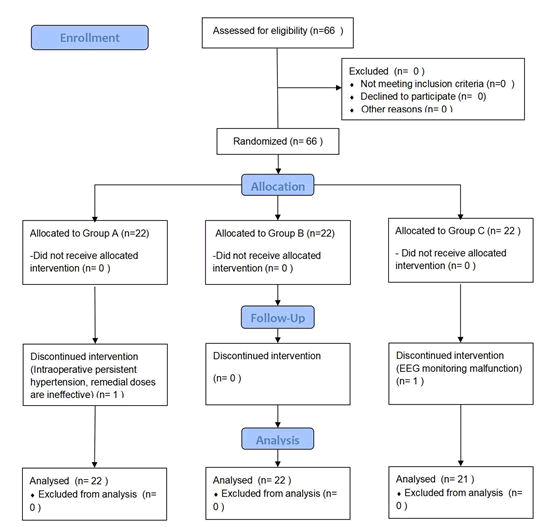
Figure 1: Consort flow chart of the procedures for elderly
patients undergoing general anesthesia.
Primary Outcome
The success rate of anesthetic sedation was 95.45% (21/22) in
the RT 6 kg/kg/h group and 100% (22/22) in the RT 12 kg/kg/h and propofol groups [difference in rate-4.55%; 95%
CI,-0.12; 0.03), meeting criteria for non-inferiority]. There was
no significant difference in the success rate of anesthetic
sedation among the three groups (P>0.05) [8].
Secondary Outcomes
MOAA/S scores ≤ 1 and BIS values<60 during anesthesia
induction were observed in groups A and B, confirming the
effectiveness of anesthesia induction with RT. During
maintenance of anesthesia, the BIS values of the three groups
were maintained at 40-72 (Table 3). The mean time of loc was
2.07 min in group a, 1.53 min in group B, and 1.92 min in
group C after induction of anesthesia. There was no significant
difference in anesthesia induction time when comparing all
three groups (P=0.223). The average time to awaken from
anesthesia was 17.33 (± 2.87) minutes in group A, 17.23 (±
2.31) minutes in group B, and 26.62 (± 5.60) minutes in group
C. The results showed a significant difference between the RT
groups (A and B) and the propofol group (P<0.05). We
confirmed that the sedative effect of RT was similar to that of
propofol, even though the recovery time from anesthesia was
decreased in the RT groups compared to the propofol group
(Figures 2 and 3) [9].
| Item |
Treatment |
RT (mg/kg/h) |
Propofol (mg/kg) |
| 6 |
12 |
2.0-2.5 |
| All subjects |
|
22 |
22 |
22 |
| ASA classification |
II |
22 (100) |
22 (100) |
22 (100) |
| Surgical time (min) |
Mean ± SD |
187.14 ± 80.87 |
192.64 ± 66.90 |
188.39 ± 73.87 |
| Efficacy rate |
N (%) |
21 (95.45) |
22 (100.0) |
21 (100.0) |
| BIS during maintenance |
Range |
40-72 |
40-63 |
40-69 |
Table 3: Characteristics of surgical intervention and RT efficacy parameters.
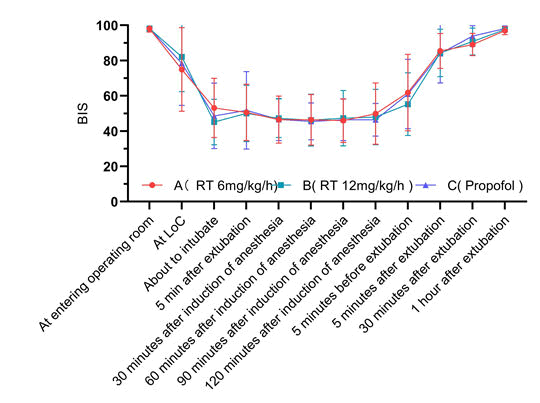
Figure 2: Change in Bispectral Index (BIS) over time (mean ±
standard deviation).
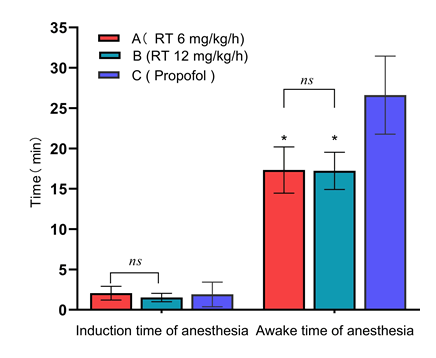
Figure 3: Comparison of induction time an d awake time
of anesthesia in three groups of patients.
As shown in Figure 4, before anesthesia induction (T0), there
was no significant difference in HR among the three groups
(P=0.302). However, HR was statistically significant after
induction of anesthesia (T1) and 5 min after tracheal
intubation (T2) (P<0.05). At T1, the mean heart rates of groups
A, B, and C were 75.23 (± 11.82) beats/min, 71.41 (± 9.30)
beats/min, and 56.52 (± 5.79) beats/min, respectively.
Compared with group C, group A and group B had significant
differences (P<0.0001), and there were no significant
differences between groups A and B at T1 (P=0.541). At T2,
both group B (70.95 ± 9.18 beats/min) and group C (65.24 ±
11.66 beats/min) had lower mean heart rates than group a
(76.14 ± 10.37 beats/min). There was no significant difference
between the A and B groups (P = 0.314), or the B and C
groups (P= 0.232) [10]. However, there was a significant
difference between group A and group C (P= 0.003). There was no signi icant difference in MAP among the three groups
of patients at different time points (Figure 5). There was a
statistically signi icant difference in MAP a ter the induction
of anesthesia (P<0.05); MAP in the RT groups was higher than
that in the propofol group, with a statistically significant
difference (both P<0.05) [11].
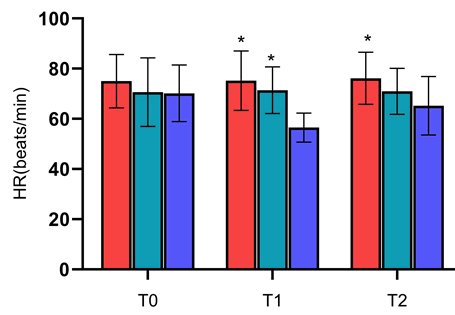
Figure 4: Changes in HR of three groups of patients at
different time points.
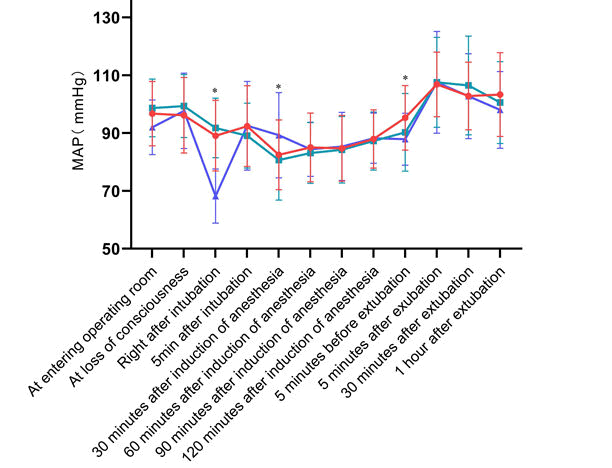
Figure 5: Change in map over time (mean ± standard
deviation).
Safety Analysis
There were significant differences in the incidence of
hypotension and bradycardia among the three groups
(P<0.05), the incidence of bradycardia in the propofol group
was 38.10%, and the incidence of hypotension was 85.71%.
Overall, 8 patients (38.10%) in the propofol group developed
bradycardia after the induction of anesthesia, in contrast to
none in the RT group. In the different doses of RT groups, 4
and 2 subjects, respectively, developed hypotension after the initial infusion of the study drug; 18 (85.71%) in the propofol
group developed hypotension [12].
Adverse Outcomes
The most frequently recorded AEs included blood pressure
drop, intravenous pain, nausea, vomiting, and intraoperative
awareness. In total, 19.05% and 13.64% of patients in the 6
mg/kg/h RT group and the 12 mg/kg/h RT group had AEs,
respectively, compared with 100% of the patients who
received propofol. The overall difference between the three groups was statistically significant (P<0.05). In addition, the
incidence of intravenous pain was 0% in the RT groups of the
two different doses and 100% in the propofol group, with a
significant difference (P<0.05). There was no significant
difference in the incidence of hypotension between the 6 mg/
kg/h and 12 mg/kg/h RT groups (P>0.05, 18.18% vs.
9.09%). No subjects in either group developed bradycardia
after the induction of anesthesia (Table 4) [13].
| |
RT (6 mg/kg/h) |
RT (12 mg/kg/h,) |
Propofol |
P-value |
| All AEs (%) |
4 (19.05) |
3 (13.64) |
21 (100) |
0 |
| Incidence of hypertension (%) |
1 (4.55) |
1 (4.55) |
0 (0) |
1 |
| Incidence of hypotension (%) |
4 (18.18) |
2 (9.09) |
18 (85.71) |
0 |
| Incidence of bradycardia (%) |
0 (0) |
0 (0) |
8 (38.10) |
0 |
| Incidence of nausea and vomiting (%) |
0 (0) |
0 (0) |
1(4.76) |
0.351 |
| Incidence of intravenous pain (%) |
0 (0) |
0 (0) |
21 (100) |
0 |
| Total number of additional sedatives (%) |
1 (4.76) |
2 (9.09) |
0 (0) |
0.767 |
Table 4: Safety assessment in full analysis population (N=65).
There was a statistically significant difference in the amount of
vasoactive drugs used in the three groups (P=0.003). There
was no significant difference in the RT 6 mg/kg/h group and
RT 12 mg/kg/h group [14]. The two groups of patients
received norepinephrine at doses of 0.19 (± 0.15) mg and 0.23
(± 0.16) mg, respectively, during the entire surgical procedure.
The RT 6 mg/kg/h and RT 12 mg/kg/h groups, compared with
the propofol group (0.42 ± 0.31 mg), were significantly
different (both P≤0.001), and the use of vasoactive drugs
during surgery was significantly reduced. Neither group A nor
group B was antagonized with lumazenil during anesthesia
resuscitation. There were 2 postoperative adverse reactions in
the propofol group, including postoperative nausea and
vomiting in 1 patient, and postoperative chills in the other.
One patient in the low-dose RT group required more than
three rescue doses, and after switching to propofol to
maintain anesthesia, the BIS value were less than 60. Both
patients in the high-dose RT group required a rescue dose of
RT, which was effective. In the RT group with different doses, 1
patient developed hypertension after tracheal extubation and
was injected with urapidil 5 mg/time, and their vital signs
returned to normal when they let the operating room. There
was no hypoxemia or intraoperative awareness in the three
groups of patients during anesthesia (Figure 6) [15].
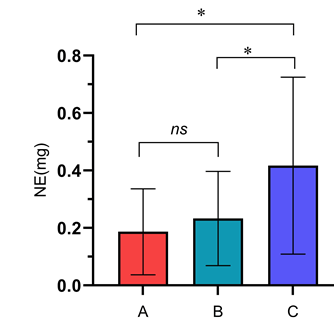
Figure 6: Comparison of the dose of Norepinephrine (NE) in
three groups of elderly patients.
In this clinical trial, the MOAA/S scores of three groups of
elderly patients during general anesthesia showed that the
depth of anesthesia was adequate and effective (Figure 7). In
the three groups of elderly patients, the MOAA/S scores were
all ≤1, and there was no intraoperative awareness [16].
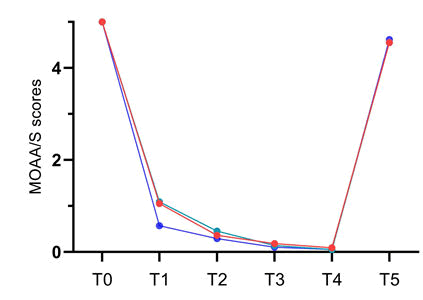
Figure 7: MOAA/S-time graph.
Discussion
Remimazolam besylate is designed for fast onset of a short,
predictable duration of sedative action, with more rapid
recovery than currently available drugs such as propofol. This
pharmacodynamics profile is achieved by rapid hydrolysis of
the drug's ester group by nonspecific tissue esterases to its
pharmacologically inactive metabolite CNS 7054 26. Despite
an increase in HR at 2 minutes after remimazolam
administration, vital signs remain stable. Pharmacokinetic
modeling has shown that remimazolam has a high clearance
rate, which is largely independent of body weight, and a small
volume of distribution. Its maximum half-life is less than 1
hour and remains unchanged when infused over 3 hours. RT is
a new type of ultrashort-acting benzodiazepine that acts on
Gamma-Amino Butyric Acid (GABA) receptors and was
developed by Hengrui medicine Co., Ltd, China. It was
approved by the China Food and Drug Administration (CFDA)
to start clinical development in March 2013. It inhibits
neuronal action, reduces neuronal excitability and causes
decreased body activity, sedation and amnesia. Studies have
shown that RT is safe and effective for endoscopic sedation in
elderly patients [17].
In this randomized trial, the two induction doses of RT (612
mg/kg/h and 12 mg/kg/h) showed noninferiority to propofol
(2.0 mg/kg-2.5 mg/kg) in terms of efficacy when used as a
sedative for general anesthesia. In fact, the success rate of
anesthesia sedation was 95.45% in the 6 mg/kg/h RT group
and 100% in the 12 mg/kg/h RT and propofol groups.
Noninferiority of RT was observed (difference in rate-4.55%,
95% CI (-0.12; 0.03), meeting criteria for non-inferiority).
During induction, both doses of RT resulted in a rapid LoC,
indicating the compound's ability to induce anesthesia.
Maintenance was ensured by continuous intravenous
infusion. The mean BIS values for all three groups were in the
range of 40-72, indicating a similar and adequate depth of
anesthesia. Although the time to induction of anesthesia was
not significantly different between the RT and propofol
groups, the recovery time from anesthesia was longer in the
latter group. The time to awaken from anesthesia was 17.33 ±
2.87 min, 17.23 ± 2.31 min, and 26.62 ± 4.84 min for patients in the 6 mg/kg/h RT, 12 mg/kg/h RT and propofol groups,
respectively (P<0.05). This is a potential advantage of RT over
propofol. On the one hand, this advantage is attributed to the
molecular design of RT, the ultrashort-acting nature of which
leads to its rapid breakdown into inactive metabolites by
popular tissue esterases 10. On the other hand, this
advantage may be attributed to the lower depth of sedation
induced by RT. As shown by the sedation curve, propofol
induced earlier and deeper sedation (MOAA/S=1) compared
to RT (MOAA/S=3), which resulted in a longer recovery time.
Therefore, RT decreases the time to recovery from anesthesia.
In terms of anesthesia recovery, the time of the RT group was
significantly shorter than that of the propofol group (P<0.05).
Moreover, the RT groups had a shorter time to extubation. In
addition, this trial was similar to the results reported. The
effect of remimazolam on HR was not obvious. The incidence
of bradycardia was significantly lower in the RT groups than in
the propofol group. The time of anesthesia induction and
resuscitation was not significantly different between the RT 6
mg/kg/h and RT 12 mg/kg/h groups, and both RT 6 mg/kg/h
and RT 12 mg/kg/h also had little effect on the patient's
hemodynamics (P>0.05). None of the patients in the RT 6
mg/kg/h, RT 12 mg/kg/h, or propofol group experienced
intraoperative awareness [18].
All treatment regimens were very safe, with no deaths during
the trial and no patients with severe AEs. Overall, a greater
proportion of patients experienced AEs with propofol (100%)
than with RT (16.28%). Of these, the most common AE was
injection site pain, which occurred in all patients in the
propofol group (100%) but not in all patients who received RT.
In this trial, a greater proportion of patients in the propofol
group (100%) than in the different-dose RT groups (76.2% vs. 86.4%) required vasoactive drugs, and the intraoperative
norepinephrine dose in the propofol group was 0.42 (± 0.31)
mg. The elderly patients in the RT groups had a lower
incidence of hypotensive events than those in the propofol
group. There was no significant difference in the incidence of
intraoperative hypotension (19.05% vs. 9.09%) or dosage of
vasoactive drugs (76.19% vs. 86.36%) between the 6 mg/kg/h
and 12 mg/kg/h RT groups. Additionally, 1 patient in the
propofol group experienced nausea and vomiting
postoperatively [19].
Conclusion
This disparity in favor of RT deserves special attention due to
the growing evidence of an impact of intraoperative
hypotension on postoperative cognitive function in elderly
patients. Nevertheless, the trial was not fully standardized in
terms of concomitant medications and their potential impact
on hemodynamics or general fluid management. There are
some limitations of this trial. First, it was a single-blind study,
with no confidentiality among the investigators.
Second, there is an overall lack of multicenter, large-scale
clinical data, and most anesthesiologists adjust their
medication based on clinical parameters, such as blood
pressure and heart rate, and similar parameters are used to
assess the efficacy of anesthetics. This trial is no exception, and biases in the results may exist. Third, studies have
demonstrated the efficacy and safety of RT general anesthesia
in ASA class III and elderly patients. Even though age and ASA
class have little effect on RT anesthesia extubation time, a
lower dose of RT is recommended for some frail elderly
patients. Only relatively healthy patients (ASA II) were
recruited in this study, and older patients with ASA III and
above and those with recent acute high-risk diseases were
excluded. Last, studies on BIS monitoring have shown that the
correlation between BIS and benzodiazepines was not ideal.
Therefore, excessive attention to BIS monitoring results may
make the depth of anesthesia in elderly patients using RT
anesthesia too deep or too shallow. Further in-depth research
is needed to study the correlation between RT and BIS. In
summary, this trial shows the non-inferiority of RT in
combination with remifentanil and cisatracurium for the
induction and maintenance of general anesthesia compared
with propofol. As expected, no patient needed flumazenil to
antagonize RT, proving the safety and metabolic stability of RT.
Therefore we conclude that RT, sedative hypnotic, is well
tolerated and noninferior to propofol with regard to efficacy
in inducing general anesthesia in elderly patients. The former
has been associated with an accelerated recovery from
anesthesia, has less impact on heart rate and decreases the
use of vasoactive drugs and the incidence of intravenous pain.
In this trial, RT of 6 mg/kg/h and 12 mg/kg/h did not differ
significantly in the efficacy and safety of induction and
maintenance of anesthesia. In addition, RT may play a more
important role in elderly and critically ill patients because of
its reduced effect on hemodynamics [20].
ETHICS AND REGISTRATION
This study was approved by the clinical trials ethics committee
of Dongguan people's hospital (KYKT2020-054), and
registered at this study protocol was performed at affiliated
Dongguan hospital, southern medical university (Dongguan
people's hospital) in China, between March 2021 and April
2022. This study was conducted in accordance with the
principles of the declaration of Helsinki, and the protocol
followed the consort guidelines.
Acknowledgments
We would like to thank anesthesiologists, surgeons at our
hospital and our research team, who supported the protocol
development and implementation of this clinical trial. All
authors contributed to the concept and design of the trial.
The material preparation and data collection were performed
by XWL, ZJZ, DW and SPP. The data analysis of the paper and
the writing of the first draft are in charge of FY and LDG, HHX
is responsible for the theoretical guidance and technical
support of this research. All authors are aware of and
responsible for the research data. All authors read and
approved the final version of the manuscript. In the end, we
would like to thank the Guangdong hospital pharmacy
research fund for their strong support.
Funding
This trial was supported by Guangdong hospital pharmacy
research fund (2020XC56).
Conflict of Interest Statement
The authors declare that there are no conflicts of interest.
References
- Weiser TG, Regenbogen SE, Thompson KD, Haynes AB, Lipsitz SR, et al. (2008) An estimation of the global volume of surgery: A modelling strategy based on available data. Lancet. 372(9633):139-144.
[Crossref] [Google Scholar] [PubMed]
- Deng C, Mitchell S, Paine S-J, Kerse N (2020) Retrospective analysis of the 13-year trend in acute and elective surgery for patients aged 60 years and over at Auckland city hospital, New Zealand. J Epidemiol Com Healt.74(1):42-47.
[Crossref] [Google Scholar] [PubMed]
- Fleg JL, Aronow WS, Frishman WH (2011) Cardiovascular drug therapy in the elderly: Benefits and challenges. Nat Rev Cardiol. 8(1):13-28.
[Crossref] [Google Scholar] [PubMed]
- Suedfeld S, Brechnitz S, Wagner JY, Reese PC, Pinnschmidt HO, et al. (2017) Post-induction hypotension and early intraoperative hypotension associated with general anaesthesia. Brit J Anaest. 119(1):57-64.
[Crossref] [Google Scholar] [PubMed]
- Klotz U (2009) Pharmacokinetics and drug metabolism in the elderly. Drug Met Rev. 41(2):67-76.
[Crossref] [Google Scholar] [PubMed]
- Frank LR, Strote J, Hauff SR, Bigelow SK, Fay K, et al. (2006) Propofol by infusion protocol for ED procedural sedation. Amer J Emerg Med. 24(5):599-602.
[Crossref] [Google Scholar] [PubMed]
- Dunn T, Mossop D, Newton A, Gammon A (2007) Propofol for procedural sedation in the emergency department. Emerg Med J. 24(7):459-461.
[Crossref] [Google Scholar] [PubMed]
- Baker MT, Naguib M (2005) Propofol-the challenges of formulation. Anesthesiol. 103(4):860-76.
[Crossref] [Google Scholar] [PubMed]
- Rex DK, Bhandari R, Desta T, DeMicco MP, Schaeffer C, et al. (2018) A phase III study evaluating the efficacy and safety of remimazolam (CNS 7056) compared with placebo and midazolam in patients undergoing colonoscopy. Gastro End. 88(3):427.
[Crossref] [Google Scholar] [PubMed]
- Wernli KJ, Brenner AT, Rutter CM, Inadomi JM (2016) Risks associated with anesthesia services during colonoscopy. Gastroenterol. 150(4):888-94.
[Crossref] [Google Scholar] [PubMed]
- Black E, Campbell SG, Magee K, Zed PJ (2013) Propofol for procedural sedation in the emergency department: A qualitative systematic review. Anna Pharm. 47(6):856-868. [Crossref]
[Google Scholar] [PubMed]
- Guo J, Qian Y, Zhang X, Han S, Shi Q, et al. (2022) Remimazolam tosilate compared with propofol for gastrointestinal endoscopy in elderly patients: A prospective, randomized and controlled study. BMC anesthesiol. 22(1):180.
[Crossref] [Google Scholar] [PubMed]
- Chen S-H, Yuan T-M, Zhang J, Bai H, Tian M, et al. (2021) Remimazolam tosilate in upper gastrointestinal endoscopy: A multicenter, randomized, non-inferiority, phase III trial. J Gastro Hepatol. 36(2):474-481.
[Crossref] [Google Scholar] [PubMed]
- Worthington MT, Antonik LJ, Goldwater DR, Lees JP, Wilhelm-Ogunbiyi K, et al. (2013) A phase Ib, dose-finding study of multiple doses of remimazolam (CNS 7056) in volunteers undergoing colonoscopy. Anesth Analg. 117(5):1093-1100.
[Crossref] [Google Scholar] [PubMed]
- Sheng XY, Liang Y, Yang XY, Li LE, Ye X, et al. (2020) Safety, pharmacokinetic and pharmacodynamic properties of single ascending dose and continuous infusion of remimazolam besylate in healthy Chinese volunteers. Euro j clin pharmacol. 76(3):383-391.
[Crossref] [Google Scholar] [PubMed]
- Keam SJ (2020) Remimazolam: First Approval. Drugs. 80(6):625-33.
[Crossref] [Google Scholar][PubMed]
- Kilpatrick GJ, McIntyre MS, Cox RF, Stafford JA, Pacofsky GJ, Lovell GG, et al. (2007) CNS 7056-A novel ultra-short-acting benzodiazepine. Anesthesiology. 107(1):60-6.
[Crossref][Google Scholar][PubMed]
- Zhang J, Wang X, Zhang Q, Wang Z, Zhu S, et al. (2022) Application effects of remimazolam and propofol on elderly patients undergoing hip replacement. BMC anesthesiol. 22(1):118.
[Crossref] [Google Scholar] [PubMed]
Citation: Xie H, Guo L, Lai X, Zhang Z, Wang D, et al. (2023) Efficacy and Safety of Remimazolam Tosilate for General
Anesthesia Induction and Maintenance in Elderly Patients: A Randomized, Controlled Study. Am J Adv Drug Deliv. 11:13.
Copyright: © 2023 Xie H, et al. This is an open-access article distributed under the terms of the Creative Commons
Attribution License, which permits unrestricted use, distribution, and reproduction in any medium, provided the original
author and source are credited.








